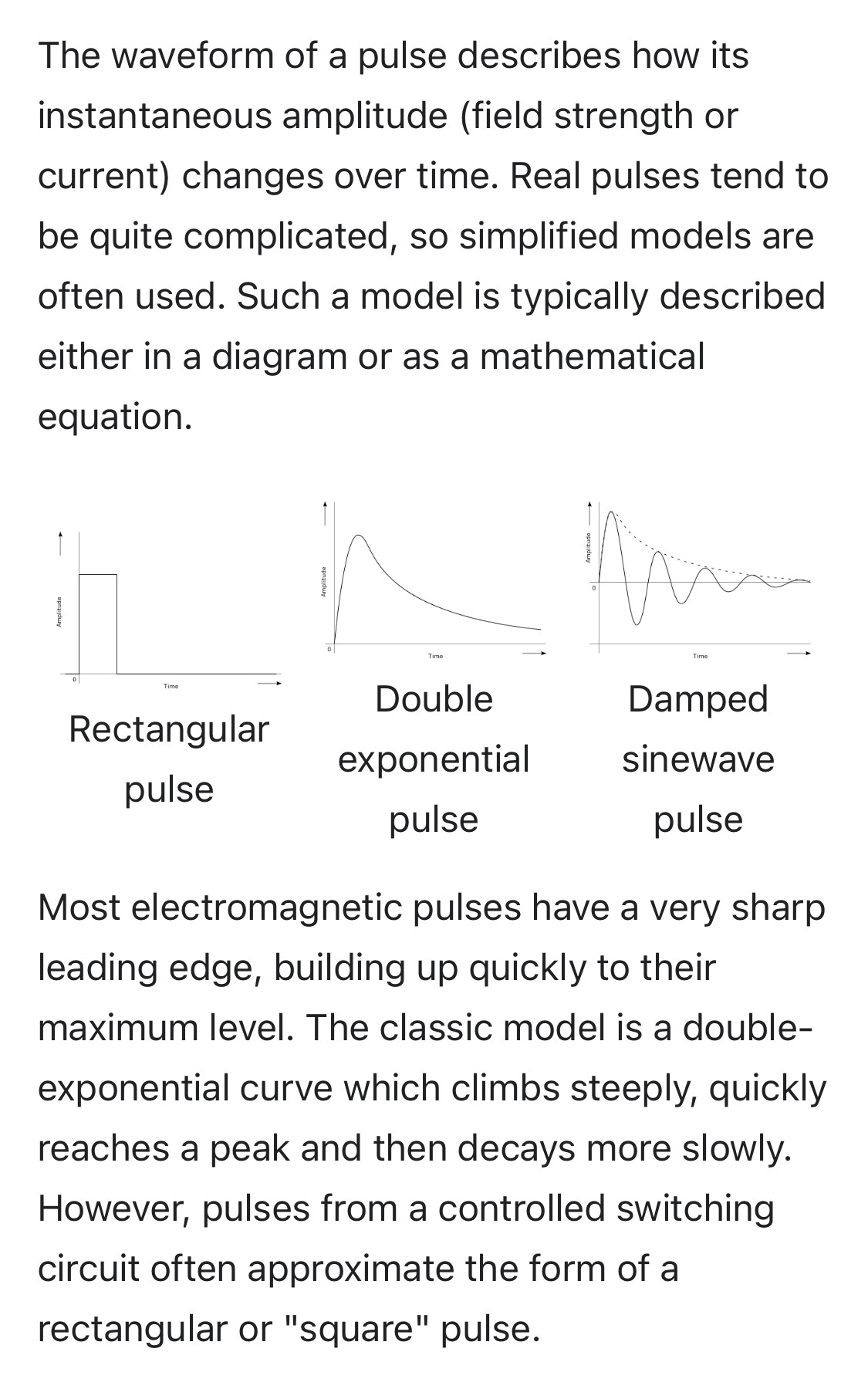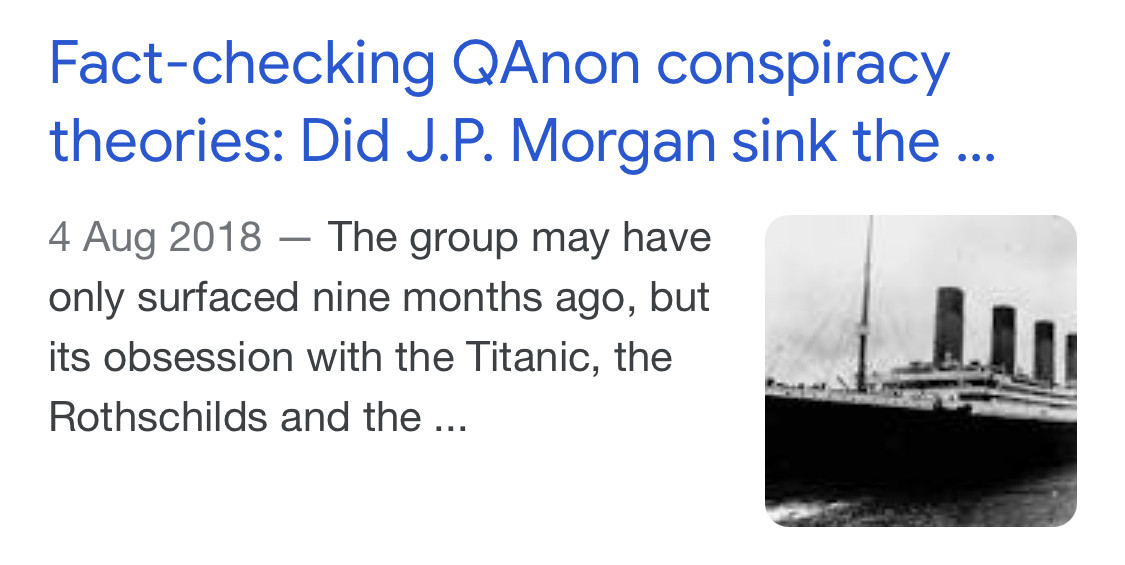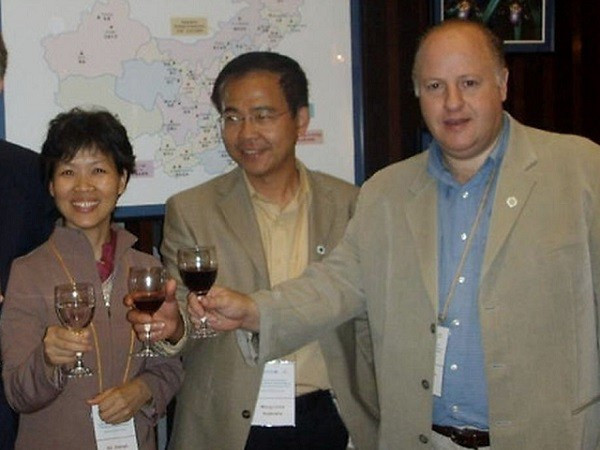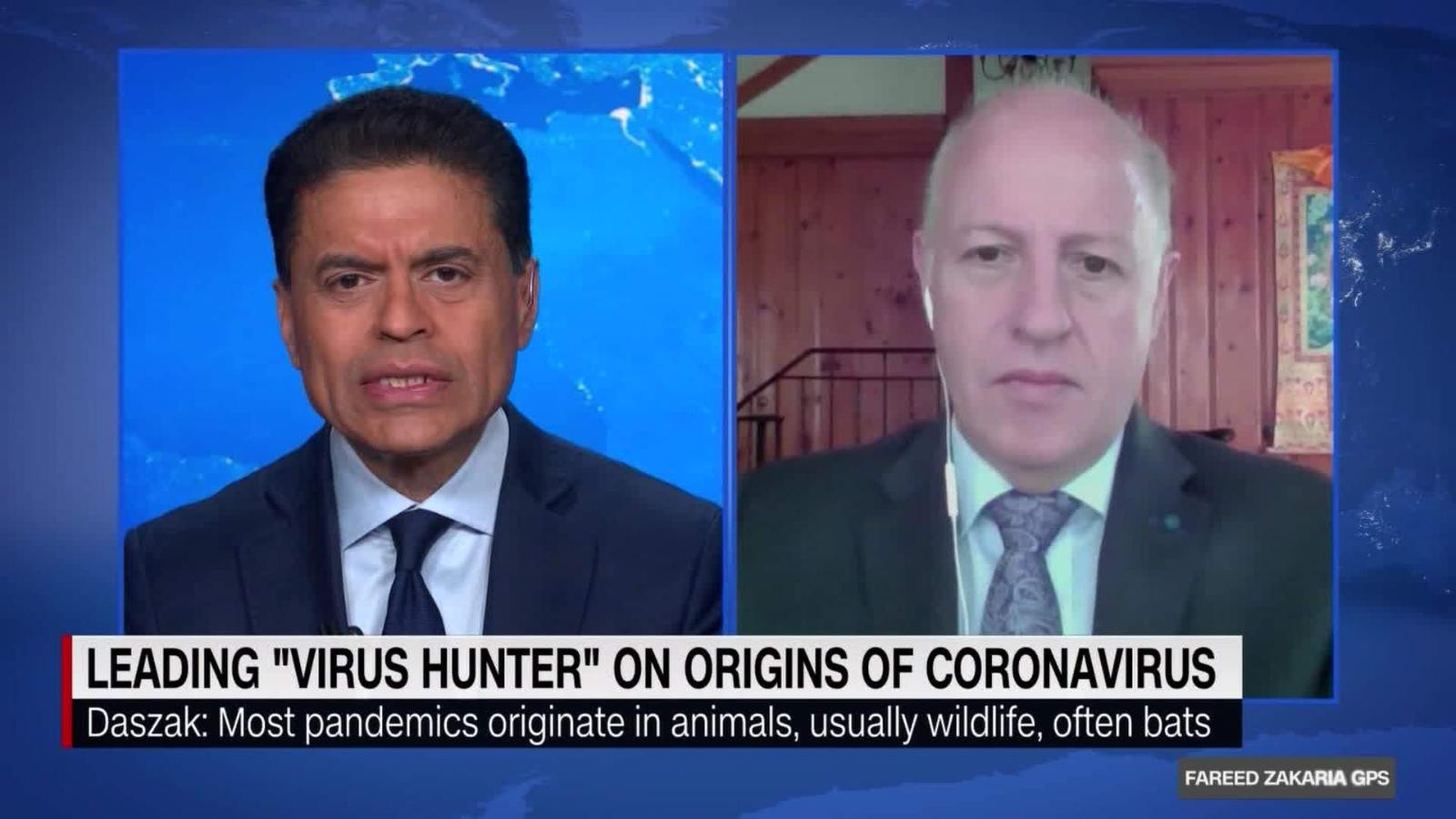The Mac
@TheMac
11 February, 04:58
Just for reference.
How much will coronavirus cost the UK?
We won't know how big the final bill will be until after the crisis is over. But the government will certainly have to borrow enormous amounts of money because it is spending more than it is taking in from tax.
On 25 November, the Office for Budget Responsibility (OBR), which keeps tabs on government spending, estimated that borrowing would be £394bn for the current financial year (April 2020 to April 2021).
That's the highest figure ever seen outside wartime.
How much will coronavirus cost the UK?
We won't know how big the final bill will be until after the crisis is over. But the government will certainly have to borrow enormous amounts of money because it is spending more than it is taking in from tax.
On 25 November, the Office for Budget Responsibility (OBR), which keeps tabs on government spending, estimated that borrowing would be £394bn for the current financial year (April 2020 to April 2021).
That's the highest figure ever seen outside wartime.
Notice: Undefined index: tg1tga_access in /home/admin/www/anonup.com/themes/default/apps/timeline/post.phtml on line 396
The Mac
@TheMac
11 February, 05:01
In response The Mac to his Publication
The government borrows money by selling bonds.
A bond is a promise to make payments to whoever holds it on certain dates. There is a large payment on the final date - in effect, the repayment.
Interest is also paid to whoever owns the bond in the meantime. So it's basically an interest-paying "IOU".
The buyers of these bonds, or "gilts", are mainly financial institutions, like pension funds, investment funds, banks and insurance companies.
Private savers also buy some.
A bond is a promise to make payments to whoever holds it on certain dates. There is a large payment on the final date - in effect, the repayment.
Interest is also paid to whoever owns the bond in the meantime. So it's basically an interest-paying "IOU".
The buyers of these bonds, or "gilts", are mainly financial institutions, like pension funds, investment funds, banks and insurance companies.
Private savers also buy some.
Notice: Undefined index: tg1tga_access in /home/admin/www/anonup.com/themes/default/apps/timeline/post.phtml on line 396
The Mac
@TheMac
11 February, 05:02
In response The Mac to his Publication
The Rothschild family is a wealthy Jewish family originally from Frankfurt that rose to prominence with Mayer Amschel Rothschild, a court factor to the German Landgraves of Hesse-Kassel in the Free City of Frankfurt, Holy Roman Empire, who established his banking business in the 1760s.
Notice: Undefined index: tg1tga_access in /home/admin/www/anonup.com/themes/default/apps/timeline/post.phtml on line 396
The Mac
@TheMac
11 February, 05:04
In response The Mac to his Publication
Cause and effect is a relationship between events or things, where one is the result of the other or others. This is a combination of action and reaction.
Notice: Undefined index: tg1tga_access in /home/admin/www/anonup.com/themes/default/apps/timeline/post.phtml on line 396
The Mac
@TheMac
11 February, 05:06
In response The Mac to his Publication
Input/output refers to the information that is passed into or out of a computer. [computing] 2. uncountable noun. Input/output refers to the hardware or software that controls the passing of information into or out of a computer.
Notice: Undefined index: tg1tga_access in /home/admin/www/anonup.com/themes/default/apps/timeline/post.phtml on line 396
The Mac
@TheMac
11 February, 05:07
In response The Mac to his Publication
late Middle English: via Old French from Latin circuitus, from circuire, variant of circumire ‘go round’, from circum ‘around’ + ire ‘go’.
Notice: Undefined index: tg1tga_access in /home/admin/www/anonup.com/themes/default/apps/timeline/post.phtml on line 396
The Mac
@TheMac
11 February, 05:12
In response The Mac to his Publication
verb: circuit; 3rd person present: circuits; past tense: circuited; past participle: circuited; gerund or present participle: circuiting
Notice: Undefined index: tg1tga_access in /home/admin/www/anonup.com/themes/default/apps/timeline/post.phtml on line 396
The Mac
@TheMac
11 February, 05:14
In response The Mac to his Publication
lap
turn
tour
round
circle
orbit
revolution
loop
beat
turn
tour
round
circle
orbit
revolution
loop
beat
Notice: Undefined index: tg1tga_access in /home/admin/www/anonup.com/themes/default/apps/timeline/post.phtml on line 396
The Mac
@TheMac
11 February, 05:15
In response The Mac to his Publication
verb: beat; 3rd person present: beats; past tense: beat; gerund or present participle: beating; past participle: beaten
1.
strike (a person or an animal) repeatedly and violently so as to hurt or injure them, typically with an implement such as a club or whip.
1.
strike (a person or an animal) repeatedly and violently so as to hurt or injure them, typically with an implement such as a club or whip.
Notice: Undefined index: tg1tga_access in /home/admin/www/anonup.com/themes/default/apps/timeline/post.phtml on line 396
The Mac
@TheMac
11 February, 05:17
In response The Mac to his Publication
B E A T E N
B E A T I N G
B E A T I N G
Notice: Undefined index: tg1tga_access in /home/admin/www/anonup.com/themes/default/apps/timeline/post.phtml on line 396
The Mac
@TheMac
11 February, 05:18
In response The Mac to his Publication
be Aten
Beat in G
Beat in G
Notice: Undefined index: tg1tga_access in /home/admin/www/anonup.com/themes/default/apps/timeline/post.phtml on line 396
The Mac
@TheMac
11 February, 05:20
In response The Mac to his Publication
beating (n.)
c. 1200, beatunge "action of inflicting blows," verbal noun from beat (v.). Meaning "pulsation" is recorded from c. 1600.
Nautical sense of "sailing against the wind" is by 1883.
c. 1200, beatunge "action of inflicting blows," verbal noun from beat (v.). Meaning "pulsation" is recorded from c. 1600.
Nautical sense of "sailing against the wind" is by 1883.
Notice: Undefined index: tg1tga_access in /home/admin/www/anonup.com/themes/default/apps/timeline/post.phtml on line 396
The Mac
@TheMac
11 February, 05:21
In response The Mac to his Publication
From Middle French pulsacion, and its source, Latin pulsātiō (“a beating or striking”).
Notice: Undefined index: tg1tga_access in /home/admin/www/anonup.com/themes/default/apps/timeline/post.phtml on line 396
The Mac
@TheMac
11 February, 05:22
In response The Mac to his Publication
pulsation (countable and uncountable, plural pulsations)
The regular throbbing of the heart, an artery etc. in a living body; the pulse. [from 15th c.]
Any rhythmic beating, throbbing etc. [from 17th c.]
(now rare) Physical striking; a blow. [from 17th c.]
A single beat, throb or vibration. [from 19th c.]
The regular throbbing of the heart, an artery etc. in a living body; the pulse. [from 15th c.]
Any rhythmic beating, throbbing etc. [from 17th c.]
(now rare) Physical striking; a blow. [from 17th c.]
A single beat, throb or vibration. [from 19th c.]
Notice: Undefined index: tg1tga_access in /home/admin/www/anonup.com/themes/default/apps/timeline/post.phtml on line 396
The Mac
@TheMac
11 February, 05:25
In response The Mac to his Publication
Borrowed from Latin pulsāre, present active infinitive of pulsō. Doublet of the inherited pujar.
Verb
pulsar (first-person singular present pulso, first-person singular preterite pulsé, past participle pulsado)
to press (a button, etc.)
pulsar un botón ― to press a button
(computing) to click (to press and release a button on a computer mouse)
to pulsate
Verb
pulsar (first-person singular present pulso, first-person singular preterite pulsé, past participle pulsado)
to press (a button, etc.)
pulsar un botón ― to press a button
(computing) to click (to press and release a button on a computer mouse)
to pulsate
Notice: Undefined index: tg1tga_access in /home/admin/www/anonup.com/themes/default/apps/timeline/post.phtml on line 396
The Mac
@TheMac
11 February, 05:28
In response The Mac to his Publication
pulse (third-person singular simple present pulses, present participle pulsing, simple past and past participle pulsed)
(transitive, also figuratively) To emit or impel (something) in pulses or waves.
(transitive, also figuratively) To emit or impel (something) in pulses or waves.
Notice: Undefined index: tg1tga_access in /home/admin/www/anonup.com/themes/default/apps/timeline/post.phtml on line 396
The Mac
@TheMac
11 February, 05:29
In response The Mac to his Publication
From Late Middle English pulse, Middle English pous, pouse (“regular beat of arteries, pulse; heartbeat; place on the body where a pulse is detectable; beat (of a musical instrument); energy, vitality”) [and other forms],
Notice: Undefined index: tg1tga_access in /home/admin/www/anonup.com/themes/default/apps/timeline/post.phtml on line 396
The Mac
@TheMac
11 February, 05:29
In response The Mac to his Publication
from Anglo-Norman puls, pous, pus, and Middle French pouls, poulz, pous [and other forms], Old French pous, pulz (“regular beat of arteries; place on the body where a pulse is detectable”) (modern French pouls), and from their etymon Latin pulsus (“beat, impulse, pulse, stroke; regular beat of arteries or the heart”), from pellō (“to drive, impel, propel, push; to banish, eject, expel; to set in motion; to strike”) (ultimately from Proto-Indo-European *pel- (“to beat, strike; to drive; to push, thrust”)) + -sus (a variant of -tus (suffix forming action nouns from verbs)).
Notice: Undefined index: tg1tga_access in /home/admin/www/anonup.com/themes/default/apps/timeline/post.phtml on line 396
The Mac
@TheMac
11 February, 05:32
In response The Mac to his Publication
(figuratively) The focus of energy or vigour of an activity, place, or thing; also, the feeling of bustle, busyness, or energy in a place; the heartbeat.
You can really feel the pulse of the city in this district.
You can really feel the pulse of the city in this district.
Notice: Undefined index: tg1tga_access in /home/admin/www/anonup.com/themes/default/apps/timeline/post.phtml on line 396
The Mac
@TheMac
11 February, 05:34
In response The Mac to his Publication
(music, prosody) The beat or tactus of a piece of music or verse; also, a repeated sequence of such beats.
(physics)
A brief burst of electromagnetic energy, such as light, radio waves, etc.
Synonym of autosoliton (“a stable solitary localized structure that arises in nonlinear spatially extended dissipative systems due to mechanisms of self-organization”)
(also electronics) A brief increase in the strength of an electrical signal; an impulse.
electromagnetic pulse
(physics)
A brief burst of electromagnetic energy, such as light, radio waves, etc.
Synonym of autosoliton (“a stable solitary localized structure that arises in nonlinear spatially extended dissipative systems due to mechanisms of self-organization”)
(also electronics) A brief increase in the strength of an electrical signal; an impulse.
electromagnetic pulse
Notice: Undefined index: tg1tga_access in /home/admin/www/anonup.com/themes/default/apps/timeline/post.phtml on line 396
The Mac
@TheMac
11 February, 05:36
In response The Mac to his Publication
An electromagnetic pulse, also sometimes called a transient electromagnetic disturbance, is a short burst of electromagnetic energy.
Such a pulse's origin may be a natural occurrence or man-made and can occur as a radiated, electric, or magnetic field or a conducted electric current, depending on the source.
Such a pulse's origin may be a natural occurrence or man-made and can occur as a radiated, electric, or magnetic field or a conducted electric current, depending on the source.
Notice: Undefined index: tg1tga_access in /home/admin/www/anonup.com/themes/default/apps/timeline/post.phtml on line 396
The Mac
@TheMac
11 February, 05:37
In response The Mac to his Publication
Weapons have been developed to deliver the damaging effects of high-energy EMP.
Notice: Undefined index: tg1tga_access in /home/admin/www/anonup.com/themes/default/apps/timeline/post.phtml on line 396
The Mac
@TheMac
11 February, 05:38
In response The Mac to his Publication
An EMP arises where the source emits a short-duration pulse of energy. The energy is usually broadband by nature, although it often excites a relatively narrow-band damped sine wave response in the surrounding environment. Some types are generated as repetitive and regular pulse trains.
Notice: Undefined index: tg1tga_access in /home/admin/www/anonup.com/themes/default/apps/timeline/post.phtml on line 396
The Mac
@TheMac
11 February, 05:38
In response The Mac to his Publication
An electromagnetic pulse is a short surge of electromagnetic energy. Its short duration means that it will be spread over a range of frequencies. Pulses are typically characterized by:
The type of energy (radiated, electric, magnetic or conducted).
The range or spectrum of frequencies present.
Pulse waveform: shape, duration and amplitude.
The last two of these, the frequency spectrum and the pulse waveform, are interrelated via the Fourier transform and may be seen as two ways of describing the same pulse.
The type of energy (radiated, electric, magnetic or conducted).
The range or spectrum of frequencies present.
Pulse waveform: shape, duration and amplitude.
The last two of these, the frequency spectrum and the pulse waveform, are interrelated via the Fourier transform and may be seen as two ways of describing the same pulse.
Notice: Undefined index: tg1tga_access in /home/admin/www/anonup.com/themes/default/apps/timeline/post.phtml on line 396
The Mac
@TheMac
11 February, 05:42
In response The Mac to his Publication
Notice: Undefined index: tg1tga_access in /home/admin/www/anonup.com/themes/default/apps/timeline/post.phtml on line 396
The Mac
@TheMac
11 February, 05:43
In response The Mac to his Publication
EMP events usually induce a corresponding signal in the surrounding environment or material. Coupling usually occurs most strongly over a relatively narrow frequency band, leading to a characteristic damped sine wave. Visually it is shown as a high frequency sine wave growing and decaying within the longer-lived envelope of the double-exponential curve.
Notice: Undefined index: tg1tga_access in /home/admin/www/anonup.com/themes/default/apps/timeline/post.phtml on line 396
The Mac
@TheMac
11 February, 05:43
In response The Mac to his Publication
A damped sinewave typically has much lower energy and a narrower frequency spread than the original pulse, due to the transfer characteristic of the coupling mode. In practice, EMP test equipment often injects these damped sinewaves directly rather than attempting to recreate the high-energy threat pulses.
In a pulse train, such as from a digital clock circuit, the waveform is repeated at regular intervals. A single complete pulse cycle is sufficient to characterise such a regular, repetitive train.
In a pulse train, such as from a digital clock circuit, the waveform is repeated at regular intervals. A single complete pulse cycle is sufficient to characterise such a regular, repetitive train.
Notice: Undefined index: tg1tga_access in /home/admin/www/anonup.com/themes/default/apps/timeline/post.phtml on line 396
The Mac
@TheMac
11 February, 05:45
In response The Mac to his Publication
Types of natural EMP event includes:
Lightning electromagnetic pulse (LEMP). The discharge is typically an initial huge current flow, at least mega-amps, followed by a train of pulses of decreasing energy.
Electrostatic discharge (ESD), as a result of two charged objects coming into close proximity or even contact.
Lightning electromagnetic pulse (LEMP). The discharge is typically an initial huge current flow, at least mega-amps, followed by a train of pulses of decreasing energy.
Electrostatic discharge (ESD), as a result of two charged objects coming into close proximity or even contact.
Notice: Undefined index: tg1tga_access in /home/admin/www/anonup.com/themes/default/apps/timeline/post.phtml on line 396
The Mac
@TheMac
11 February, 05:46
In response The Mac to his Publication
Coronal mass ejection (CME), sometimes referred to as a solar EMP. A burst of plasma and accompanying magnetic field, ejected from the solar corona and released into the solar wind.
Notice: Undefined index: tg1tga_access in /home/admin/www/anonup.com/themes/default/apps/timeline/post.phtml on line 396
The Mac
@TheMac
11 February, 05:47
In response The Mac to his Publication
Types of (civil) man-made EMP event include:
Switching action of electrical circuitry, whether isolated or repetitive (as a pulse train).
Electric motors can create a train of pulses as the internal electrical contacts make and break connections as the armature rotates.
Gasoline engine ignition systems can create a train of pulses as the spark plugs are energized or fired.
Continual switching actions of digital electronic circuitry.
Power line surges.
Switching action of electrical circuitry, whether isolated or repetitive (as a pulse train).
Electric motors can create a train of pulses as the internal electrical contacts make and break connections as the armature rotates.
Gasoline engine ignition systems can create a train of pulses as the spark plugs are energized or fired.
Continual switching actions of digital electronic circuitry.
Power line surges.
Notice: Undefined index: tg1tga_access in /home/admin/www/anonup.com/themes/default/apps/timeline/post.phtml on line 396
The Mac
@TheMac
11 February, 05:48
In response The Mac to his Publication
Types of military EMP include:
Nuclear electromagnetic pulse (NEMP), as a result of a nuclear explosion. A variant of this is the high altitude nuclear EMP (HEMP), which produces a secondary pulse due to particle interactions with the Earth's atmosphere and magnetic field.
Non-nuclear electromagnetic pulse (NNEMP) weapons.
Nuclear electromagnetic pulse (NEMP), as a result of a nuclear explosion. A variant of this is the high altitude nuclear EMP (HEMP), which produces a secondary pulse due to particle interactions with the Earth's atmosphere and magnetic field.
Non-nuclear electromagnetic pulse (NNEMP) weapons.
Notice: Undefined index: tg1tga_access in /home/admin/www/anonup.com/themes/default/apps/timeline/post.phtml on line 396
The Mac
@TheMac
11 February, 05:51
In response The Mac to his Publication
A nuclear electromagnetic pulse is the abrupt pulse of electromagnetic radiation resulting from a nuclear explosion.
The resulting rapidly changing electric fields and magnetic fields may couple with electrical/electronic systems to produce damaging current and voltage surges.
The intense gamma radiation emitted can also ionize the surrounding air, creating a secondary EMP as the atoms of air first lose their electrons and then regain them.
The resulting rapidly changing electric fields and magnetic fields may couple with electrical/electronic systems to produce damaging current and voltage surges.
The intense gamma radiation emitted can also ionize the surrounding air, creating a secondary EMP as the atoms of air first lose their electrons and then regain them.
Notice: Undefined index: tg1tga_access in /home/admin/www/anonup.com/themes/default/apps/timeline/post.phtml on line 396
The Mac
@TheMac
11 February, 05:58
In response The Mac to his Publication
By giving the atom additional energy (for example, by the absorption of a photon of an appropriate energy), the electron is able to move into an excited state (one with one or more quantum numbers greater than the minimum possible). If the photon has too much energy, the electron will cease to be bound to the atom, and the atom will become ionized.
Notice: Undefined index: tg1tga_access in /home/admin/www/anonup.com/themes/default/apps/timeline/post.phtml on line 396
The Mac
@TheMac
11 February, 05:59
In response The Mac to his Publication
There are four types of chemical bonds essential for life to exist: Ionic Bonds, Covalent Bonds, Hydrogen Bonds, and van der Waals interactions.
Notice: Undefined index: tg1tga_access in /home/admin/www/anonup.com/themes/default/apps/timeline/post.phtml on line 396
The Mac
@TheMac
11 February, 06:00
In response The Mac to his Publication
A covalent bond is a chemical bond that involves the sharing of electron pairs between atoms. These electron pairs are known as shared pairs or bonding pairs, and the stable balance of attractive and repulsive forces between atoms, when they share electrons, is known as covalent bonding.
Notice: Undefined index: tg1tga_access in /home/admin/www/anonup.com/themes/default/apps/timeline/post.phtml on line 396
The Mac
@TheMac
11 February, 06:03
In response The Mac to his Publication
https://en.m.wikipedia.org...
https://en.m.wikipedia.org...
In chemistry, an unpaired electron is an electron that occupies an orbital of an atom singly, rather than as part of an electron pair. Each atomic orbital of an atom (specified by the three quantum numbers n, l and m) has a capacity to contain two electrons (electron pair) with opposite spins.
https://en.m.wikipedia.org...
In chemistry, an unpaired electron is an electron that occupies an orbital of an atom singly, rather than as part of an electron pair. Each atomic orbital of an atom (specified by the three quantum numbers n, l and m) has a capacity to contain two electrons (electron pair) with opposite spins.
Notice: Undefined index: tg1tga_access in /home/admin/www/anonup.com/themes/default/apps/timeline/post.phtml on line 396
The Mac
@TheMac
11 February, 06:03
In response The Mac to his Publication
As the formation of electron pairs is often energetically favourable, either in the form of a chemical bond or as a lone pair, unpaired electrons are relatively uncommon in chemistry, because an entity that carries an unpaired electron is usually rather reactive. In organic chemistry they typically only occur briefly during a reaction on an entity called a radical; however, they play an important role in explaining reaction pathways.
Notice: Undefined index: tg1tga_access in /home/admin/www/anonup.com/themes/default/apps/timeline/post.phtml on line 396
The Mac
@TheMac
11 February, 06:04
In response The Mac to his Publication
In chemistry, a radical is an atom, molecule, or ion that has an unpaired valence electron.
With some exceptions, these unpaired electrons make radicals highly chemically reactive.
With some exceptions, these unpaired electrons make radicals highly chemically reactive.
Notice: Undefined index: tg1tga_access in /home/admin/www/anonup.com/themes/default/apps/timeline/post.phtml on line 396
The Mac
@TheMac
11 February, 06:05
In response The Mac to his Publication
Radicals may be generated in a number of ways, but typical methods involve redox reactions. Ionizing radiation, heat, electrical discharges, and electrolysis are known to produce radicals. Radicals are intermediates in many chemical reactions, more so than is apparent from the balanced equations.
Notice: Undefined index: tg1tga_access in /home/admin/www/anonup.com/themes/default/apps/timeline/post.phtml on line 396
The Mac
@TheMac
11 February, 06:06
In response The Mac to his Publication
Ionizing radiation (ionising radiation) is radiation, traveling as a particle or electromagnetic wave, that carries sufficient energy to detach electrons from atoms or molecules, thereby ionizing an atom or a molecule. Ionizing radiation is made up of energetic subatomic particles, ions or atoms moving at high speeds (usually greater than 1% of the speed of light), and electromagnetic waves on the high-energy end of the electromagnetic spectrum.
Notice: Undefined index: tg1tga_access in /home/admin/www/anonup.com/themes/default/apps/timeline/post.phtml on line 396
The Mac
@TheMac
11 February, 06:07
In response The Mac to his Publication
"or electromagnetic wave, that carries sufficient energy to detach electrons from atoms or molecules"
Notice: Undefined index: tg1tga_access in /home/admin/www/anonup.com/themes/default/apps/timeline/post.phtml on line 396
The Mac
@TheMac
11 February, 06:08
In response The Mac to his Publication
Inwardly say, “Thank you,” for what you've learned from the relationship, even if the lessons were hard. Then firmly assert, “It's time to completely break our bonds.” Next, visualize taking a pair of scissors and cutting each bond completely so you're free of any mutual energetic ties.
Notice: Undefined index: tg1tga_access in /home/admin/www/anonup.com/themes/default/apps/timeline/post.phtml on line 396
The Mac
@TheMac
11 February, 06:09
In response The Mac to his Publication
God Bless you all.
Notice: Undefined index: tg1tga_access in /home/admin/www/anonup.com/themes/default/apps/timeline/post.phtml on line 396
The Mac
@TheMac
11 February, 06:14
In response The Mac to his Publication
currency (n.)
1650s, "condition of flowing," a sense now rare or obsolete, from Latin currens, present participle of currere "to run" (from PIE root *kers- "to run").
1650s, "condition of flowing," a sense now rare or obsolete, from Latin currens, present participle of currere "to run" (from PIE root *kers- "to run").
Notice: Undefined index: tg1tga_access in /home/admin/www/anonup.com/themes/default/apps/timeline/post.phtml on line 396
The Mac
@TheMac
11 February, 06:16
In response The Mac to his Publication
Borrowed from Medieval Latin currentia, from Latin currēns, from currō.
Notice: Undefined index: tg1tga_access in /home/admin/www/anonup.com/themes/default/apps/timeline/post.phtml on line 396
The Mac
@TheMac
11 February, 06:18
In response The Mac to his Publication
: current; plural noun: currents
1.
a body of water or air moving in a definite direction, especially through a surrounding body of water or air in which there is less movement.
"ocean currents"
steady flow
stream
backdraught
slipstream
airstream
thermal
updraught
draught
undercurrent
undertow
tide
1.
a body of water or air moving in a definite direction, especially through a surrounding body of water or air in which there is less movement.
"ocean currents"
steady flow
stream
backdraught
slipstream
airstream
thermal
updraught
draught
undercurrent
undertow
tide
Notice: Undefined index: tg1tga_access in /home/admin/www/anonup.com/themes/default/apps/timeline/post.phtml on line 396
The Mac
@TheMac
11 February, 06:19
In response The Mac to his Publication
2.
a flow of electricity which results from the ordered directional movement of electrically charged particles.
"this completes the circuit so that a current flows to the lamp"
a quantity representing the rate of flow of electric charge, usually measured in amperes.
"at high currents there is wasteful power dissipation"
a flow of electricity which results from the ordered directional movement of electrically charged particles.
"this completes the circuit so that a current flows to the lamp"
a quantity representing the rate of flow of electric charge, usually measured in amperes.
"at high currents there is wasteful power dissipation"
Notice: Undefined index: tg1tga_access in /home/admin/www/anonup.com/themes/default/apps/timeline/post.phtml on line 396
The Mac
@TheMac
11 February, 06:21
In response The Mac to his Publication
electric current (plural electric currents)
(physics) a net unidirectional movement of electrons, or other charge carriers, caused by a potential difference
An electric current runs through this wire.
(physics) the net charge that passes through some cross-section of a conducting material (in one direction), per unit time, having the SI unit A (C/s)
The electric current in this wire is 5 A.
Hyponyms
direct current
alternating current
(physics) a net unidirectional movement of electrons, or other charge carriers, caused by a potential difference
An electric current runs through this wire.
(physics) the net charge that passes through some cross-section of a conducting material (in one direction), per unit time, having the SI unit A (C/s)
The electric current in this wire is 5 A.
Hyponyms
direct current
alternating current
Notice: Undefined index: tg1tga_access in /home/admin/www/anonup.com/themes/default/apps/timeline/post.phtml on line 396
The Mac
@TheMac
11 February, 06:22
In response The Mac to his Publication
alternating current (countable and uncountable, plural alternating currents) (abbreviated as AC)
(physics) An electric current in which the direction of flow of the electrons reverses periodically,
such as sawtooth,
sinusoidal
or square wave current.
(physics) An electric current in which the direction of flow of the electrons reverses periodically,
such as sawtooth,
sinusoidal
or square wave current.
Notice: Undefined index: tg1tga_access in /home/admin/www/anonup.com/themes/default/apps/timeline/post.phtml on line 396
The Mac
@TheMac
11 February, 06:23
In response The Mac to his Publication
(physics) An electric current in which the direction of flow of the electrons reverses periodically by a sinusoidal law, hence having an average of zero, with positive and negative values (with a frequency of 50 Hz in Europe, 60 Hz in the US, 400 Hz for airport lighting, and some others); especially such a current produced by a rotating generator or alternator.
Notice: Undefined index: tg1tga_access in /home/admin/www/anonup.com/themes/default/apps/timeline/post.phtml on line 396
The Mac
@TheMac
11 February, 06:24
In response The Mac to his Publication
alternator (plural alternators)
An electric generator which produces alternating current through mechanical means.
An electric generator which produces alternating current through mechanical means.
Notice: Undefined index: tg1tga_access in /home/admin/www/anonup.com/themes/default/apps/timeline/post.phtml on line 396
The Mac
@TheMac
11 February, 06:27
In response The Mac to his Publication
Notice: Undefined index: tg1tga_access in /home/admin/www/anonup.com/themes/default/apps/timeline/post.phtml on line 396
The Mac
@TheMac
11 February, 06:29
In response The Mac to his Publication
In July 1888 Westinghouse paid a substantial amount to license Nikola Tesla's US patents for a poly-phase AC induction motor and obtained a patent option on Galileo Ferraris' induction motor design. Although the acquisition of a feasible AC motor gave Westinghouse a key patent in building a completely integrated AC system, the general shortage of cash the company was going through by 1890 meant development had to be put on hold for a while.
Notice: Undefined index: tg1tga_access in /home/admin/www/anonup.com/themes/default/apps/timeline/post.phtml on line 396
The Mac
@TheMac
11 February, 06:29
In response The Mac to his Publication
The difficulties of obtaining funding for such a capital intensive business was becoming a serious problem for the company and 1890 saw the first of several attempts by investor J. P. Morgan to take over Westinghouse Electric.
Notice: Undefined index: tg1tga_access in /home/admin/www/anonup.com/themes/default/apps/timeline/post.phtml on line 396
The Mac
@TheMac
11 February, 06:31
In response The Mac to his Publication
Notice: Undefined index: tg1tga_access in /home/admin/www/anonup.com/themes/default/apps/timeline/post.phtml on line 396
The Mac
@TheMac
11 February, 06:34
In response The Mac to his Publication
The Federal Reserve System is not "owned" by anyone.
Notice: Undefined index: tg1tga_access in /home/admin/www/anonup.com/themes/default/apps/timeline/post.phtml on line 396
The Mac
@TheMac
11 February, 06:36
In response The Mac to his Publication
Notice: Undefined index: tg1tga_access in /home/admin/www/anonup.com/themes/default/apps/timeline/post.phtml on line 396
The Mac
@TheMac
11 February, 06:38
In response The Mac to his Publication
Banks buying and selling government bonds is one particularly important way in which the purchase or sale of existing assets by banks creates and destroys money. Banks often buy and hold government bonds as part of their portfolio of liquid assets that can be sold on quickly for central bank money if, for example, depositors want to withdraw currency in large amounts.(1)
Notice: Undefined index: tg1tga_access in /home/admin/www/anonup.com/themes/default/apps/timeline/post.phtml on line 396
The Mac
@TheMac
11 February, 06:39
In response The Mac to his Publication
Whenbankspurchasegovernmentbondsfrom the non-bank private sector they credit the sellers with bank deposits.(2) And,asdiscussedlaterinthisarticle,centralbank asset purchases, known as quantitative easing (QE), have similar implications for money creation
Notice: Undefined index: tg1tga_access in /home/admin/www/anonup.com/themes/default/apps/timeline/post.phtml on line 396
The Mac
@TheMac
11 February, 06:42
In response The Mac to his Publication
Commercial banks create money, in the form of bank deposits, by making new loans. When a bank makes a loan, for example to someone taking out a mortgage to buy a house, it does not typically do so by giving them thousands of pounds worth of banknotes. Instead, it credits their bank account with a bank deposit of the size of the mortgage. At that moment, new money is created. For this reason, some economists have referred to bank deposits as ‘fountain pen money’, created at the stroke of bankers’ pens when they approve loans.
Notice: Undefined index: tg1tga_access in /home/admin/www/anonup.com/themes/default/apps/timeline/post.phtml on line 396
The Mac
@TheMac
11 February, 06:43
In response The Mac to his Publication
Whenever a bank makes a loan, it simultaneously creates a matching deposit in the borrower’s bank account, thereby creating new money.
Notice: Undefined index: tg1tga_access in /home/admin/www/anonup.com/themes/default/apps/timeline/post.phtml on line 396
The Mac
@TheMac
11 February, 06:48
In response The Mac to his Publication
The UK government is borrowing record-breaking amounts, to pay for measures designed to limit the impact of coronavirus.
Who really benefits and who really looses from creating (crediting) new money (loans)?
Who really benefits and who really looses from creating (crediting) new money (loans)?
Notice: Undefined index: tg1tga_access in /home/admin/www/anonup.com/themes/default/apps/timeline/post.phtml on line 396
The Mac
@TheMac
11 February, 06:51
In response The Mac to his Publication
Notice: Undefined index: tg1tga_access in /home/admin/www/anonup.com/themes/default/apps/timeline/post.phtml on line 396
The Mac
@TheMac
11 February, 06:53
In response The Mac to his Publication
Notice: Undefined index: tg1tga_access in /home/admin/www/anonup.com/themes/default/apps/timeline/post.phtml on line 396
The Mac
@TheMac
11 February, 06:54
In response The Mac to his Publication
Notice: Undefined index: tg1tga_access in /home/admin/www/anonup.com/themes/default/apps/timeline/post.phtml on line 396
The Mac
@TheMac
11 February, 06:55
In response The Mac to his Publication
The usual suspects.
Notice: Undefined index: tg1tga_access in /home/admin/www/anonup.com/themes/default/apps/timeline/post.phtml on line 396
The Mac
@TheMac
11 February, 06:58
In response The Mac to his Publication
Notice: Undefined index: tg1tga_access in /home/admin/www/anonup.com/themes/default/apps/timeline/post.phtml on line 396
The Mac
@TheMac
11 February, 07:04
In response The Mac to his Publication
The Internet of Medical Things (IoMT) is a term that describes all medical devices connected to a healthcare provider's computer system through the internet. These devices can generate, collect, analyze and transmit healthcare data. ... The possibilities have people talking about a revolution in how healthcare operates.
Notice: Undefined index: tg1tga_access in /home/admin/www/anonup.com/themes/default/apps/timeline/post.phtml on line 396
The Mac
@TheMac
11 February, 07:06
In response The Mac to his Publication
Notice: Undefined index: tg1tga_access in /home/admin/www/anonup.com/themes/default/apps/timeline/post.phtml on line 396
The Mac
@TheMac
11 February, 07:26
In response The Mac to his Publication
From Ancient Greek ἁπτικός (haptikós, “able to come in contact with”), from ἅπτω (háptō, “to touch”) + -ικός (-ikós, “suffix forming an adjective from a noun”).
Notice: Undefined index: tg1tga_access in /home/admin/www/anonup.com/themes/default/apps/timeline/post.phtml on line 396
The Mac
@TheMac
11 February, 07:27
In response The Mac to his Publication
(computing) Of or relating to haptics (“the study of user interfaces that use the sense of touch”).
Notice: Undefined index: tg1tga_access in /home/admin/www/anonup.com/themes/default/apps/timeline/post.phtml on line 396
The Mac
@TheMac
11 February, 07:28
In response The Mac to his Publication
haptic interface (plural haptic interfaces)
(computing) A user interface that allows a user to receive tactile feedback via movement of a limb or the head
(computing) A user interface that allows a user to receive tactile feedback via movement of a limb or the head
Notice: Undefined index: tg1tga_access in /home/admin/www/anonup.com/themes/default/apps/timeline/post.phtml on line 396
The Mac
@TheMac
11 February, 07:34
In response The Mac to his Publication
Lucent Technologies (formerly AT&T) Microelectronics completed transition of their mask manufacturing to external vendors 1Q96.
Notice: Undefined index: tg1tga_access in /home/admin/www/anonup.com/themes/default/apps/timeline/post.phtml on line 396
The Mac
@TheMac
11 February, 07:35
In response The Mac to his Publication
Maintaining a digital interface of all mask data and ordering information was critical to optimize the front end handshake with our vendors and to provide continuing support to our wafer fabrication lines. The goals that were set and achieved by using a totally digital interface are: reduced critical path vendor customer service and front end time; clarification and accuracy in meeting requirements; and ISO 9002 compliance, traceability and repeatability
.
.
Notice: Undefined index: tg1tga_access in /home/admin/www/anonup.com/themes/default/apps/timeline/post.phtml on line 396
The Mac
@TheMac
11 February, 07:37
In response The Mac to his Publication
Wafer bonding became during past decade an important technology for MEMS manufacturing and wafer-level 3D integration applications. The increased complexity of the MEMS devices brings new challenges to the processing techniques. In MEMS manufacturing wafer bonding can be used for integration of the electronic components (e.g. CMOS circuitries) with the mechanical (e.g. resonators) or optical components (e.g. waveguides, mirrors) in a single, wafer-level process step.
Notice: Undefined index: tg1tga_access in /home/admin/www/anonup.com/themes/default/apps/timeline/post.phtml on line 396
The Mac
@TheMac
11 February, 07:37
In response The Mac to his Publication
However, wafer bonding with CMOS wafers brings additional challenges due to very strict requirements in terms of process temperature and contamination. These challenges were identified and wafer bonding process solutions will be presented illustrated with examples.
Notice: Undefined index: tg1tga_access in /home/admin/www/anonup.com/themes/default/apps/timeline/post.phtml on line 396
The Mac
@TheMac
11 February, 07:40
In response The Mac to his Publication
Wafer bonding is a packaging technology on wafer-level for the fabrication of microelectromechanical systems (MEMS), nanoelectromechanical systems (NEMS), microelectronics and optoelectronics, ensuring a mechanically stable and hermetically sealed encapsulation. The wafers' diameter range from 100 mm to 200 mm (4 inch to 8 inch) for MEMS/NEMS and up to 300 mm (12 inch) for the production of microelectronic devices. Smaller wafers were used in the early days of the microelectronics industry, with wafers being just 1 inch in diameter in the 1950s.
Notice: Undefined index: tg1tga_access in /home/admin/www/anonup.com/themes/default/apps/timeline/post.phtml on line 396
The Mac
@TheMac
11 February, 07:41
In response The Mac to his Publication
The commonly used and developed bonding methods are as follows:
Direct bonding
Surface activated bonding
Plasma activated bonding
Anodic bonding
Eutectic bonding
Glass frit bonding
Adhesive bonding
Thermocompression bonding
Reactive bonding
Transient liquid phase diffusion bonding
Direct bonding
Surface activated bonding
Plasma activated bonding
Anodic bonding
Eutectic bonding
Glass frit bonding
Adhesive bonding
Thermocompression bonding
Reactive bonding
Transient liquid phase diffusion bonding
Notice: Undefined index: tg1tga_access in /home/admin/www/anonup.com/themes/default/apps/timeline/post.phtml on line 396
The Mac
@TheMac
11 February, 07:42
In response The Mac to his Publication
The bonded wafers are characterized in order to evaluate a technology's yield, bonding strength and level of hermeticity either for fabricated devices or for the purpose of process development. Therefore, several different approaches for the bond characterization have emerged. On the one hand non-destructive optical methods to find cracks or interfacial voids are used beside destructive techniques for the bond strength evaluation, like tensile or shear testing.
Notice: Undefined index: tg1tga_access in /home/admin/www/anonup.com/themes/default/apps/timeline/post.phtml on line 396
The Mac
@TheMac
11 February, 07:43
In response The Mac to his Publication
On the other hand, the unique properties of carefully chosen gases or the pressure depending vibration behavior of micro resonators are exploited for hermeticity testing.
Notice: Undefined index: tg1tga_access in /home/admin/www/anonup.com/themes/default/apps/timeline/post.phtml on line 396
The Mac
@TheMac
11 February, 07:44
In response The Mac to his Publication
Microelectromechanical systems (MEMS), also written as micro-electro-mechanical systems (or microelectronic and microelectromechanical systems) and the related micromechatronics and microsystems constitute the technology of microscopic devices, particularly those with moving parts. They merge at the nanoscale into nanoelectromechanical systems (NEMS) and nanotechnology. MEMS are also referred to as micromachines in Japan and microsystem technology (MST) in Europe.
Notice: Undefined index: tg1tga_access in /home/admin/www/anonup.com/themes/default/apps/timeline/post.phtml on line 396
The Mac
@TheMac
11 February, 07:45
In response The Mac to his Publication
The fabrication of MEMS evolved from the process technology in semiconductor device fabrication, i.e. the basic techniques are deposition of material layers, patterning by photolithography and etching to produce the required shapes
Notice: Undefined index: tg1tga_access in /home/admin/www/anonup.com/themes/default/apps/timeline/post.phtml on line 396
The Mac
@TheMac
11 February, 07:48
In response The Mac to his Publication
Newswise — ITHACA, N.Y. – Just as the single-crystal silicon wafer forever changed the nature of communication 60 years ago, a group of Cornell researchers is hoping its work with quantum dot solids – crystals made out of crystals – can help usher in a new era in electronics.
Notice: Undefined index: tg1tga_access in /home/admin/www/anonup.com/themes/default/apps/timeline/post.phtml on line 396
The Mac
@TheMac
11 February, 07:49
In response The Mac to his Publication
The team, led by Tobias Hanrath, associate professor in the Robert Frederick Smith School of Chemical and Biomolecular Engineering, and graduate student Kevin Whitham, has fashioned two-dimensional superstructures out of single-crystal building blocks. Through a pair of chemical processes, the lead-selenium nanocrystals are synthesized into larger crystals, then fused together to form atomically coherent square superlattices.
Notice: Undefined index: tg1tga_access in /home/admin/www/anonup.com/themes/default/apps/timeline/post.phtml on line 396
The Mac
@TheMac
11 February, 07:49
In response The Mac to his Publication
The difference between these and previous crystalline structures is the atomic coherence of each 5-nanometer crystal (a nanometer is one-billionth of a meter). They’re not connected by a substance between each crystal – they’re connected to each other. The electrical properties of these superstructures potentially are superior to existing semiconductor nanocrystals, with anticipated applications in energy absorption and light emission.
Notice: Undefined index: tg1tga_access in /home/admin/www/anonup.com/themes/default/apps/timeline/post.phtml on line 396
The Mac
@TheMac
11 February, 07:54
In response The Mac to his Publication
Optogenetic control of neural activity in deep brain regions ideally requires precise and flexible light delivery with non-invasive devices.
Notice: Undefined index: tg1tga_access in /home/admin/www/anonup.com/themes/default/apps/timeline/post.phtml on line 396
The Mac
@TheMac
11 February, 07:55
In response The Mac to his Publication
To this end, Tapered Optical Fibers (TFs) represent a versatile tool that can deliver light over either large brain volumes or spatially confined sub-regions, while being sensibly smaller than flat-cleaved optical fibers. In this work, we report on the possibility of further extending light emission length along the taper in the range 0.4 mm-3.0 mm by increasing the numerical aperture of the TFs to NA= 0.66. We investigated the dependence between the input angle of light (θ in) and the output position along the taper, finding that for θ in> 10 this relationship is linear.
Notice: Undefined index: tg1tga_access in /home/admin/www/anonup.com/themes/default/apps/timeline/post.phtml on line 396
The Mac
@TheMac
11 February, 07:56
In response The Mac to his Publication
This mode-division demultiplexing property of the taper was confirmed with a ray tracing model and characterized for 473 nm and 561 nm light in quasi-transparent solution and in brain slices, with the two wavelengths used to illuminate simultaneously two different regions of the brain using only one waveguide.
Notice: Undefined index: tg1tga_access in /home/admin/www/anonup.com/themes/default/apps/timeline/post.phtml on line 396
The Mac
@TheMac
11 February, 07:56
In response The Mac to his Publication
The results presented in this manuscript can guide neuroscientists to design their optogenetic experiments on the base of this mode-division demultiplexing approach, providing a tool that potentially allow for dynamic targeting of regions with diverse extension, from the mouse VTA up to the macaque visual cortex.
Notice: Undefined index: tg1tga_access in /home/admin/www/anonup.com/themes/default/apps/timeline/post.phtml on line 396
The Mac
@TheMac
11 February, 08:00
In response The Mac to his Publication
Notice: Undefined index: tg1tga_access in /home/admin/www/anonup.com/themes/default/apps/timeline/post.phtml on line 396
The Mac
@TheMac
11 February, 08:02
In response The Mac to his Publication
A brain–computer interface, sometimes called a neural control interface, mind–machine interface, direct neural interface, or brain–machine interface, is a direct communication pathway between an enhanced or wired brain and an external device.
Notice: Undefined index: tg1tga_access in /home/admin/www/anonup.com/themes/default/apps/timeline/post.phtml on line 396
The Mac
@TheMac
11 February, 08:04
In response The Mac to his Publication
A brain-computer interface (BCI) is a computer-based system that acquires brain signals, analyzes them, and translates them into commands that are relayed to an output device to carry out a desired action. In principle, any type of brain signal could be used to control a BCI system.
Notice: Undefined index: tg1tga_access in /home/admin/www/anonup.com/themes/default/apps/timeline/post.phtml on line 396
The Mac
@TheMac
11 February, 08:05
In response The Mac to his Publication
Neural interfaces are devices that interact with the nervous system. They are electronic devices placed on the outside or inside of the brain or nervous ...
Notice: Undefined index: tg1tga_access in /home/admin/www/anonup.com/themes/default/apps/timeline/post.phtml on line 396
The Mac
@TheMac
11 February, 08:08
In response The Mac to his Publication
Photochemical events in vision involve the protein opsin and the cis/trans isomers of retinal. Upon absorption of a photon of light in the visible range, cis-retinal can isomerize to all-trans-retinal. ... The shape of the molecule changes as a result of this isomerization.
Notice: Undefined index: tg1tga_access in /home/admin/www/anonup.com/themes/default/apps/timeline/post.phtml on line 396
The Mac
@TheMac
12 February, 01:57
In response The Mac to his Publication
Research on BCIs began in the 1970s at the University of California, Los Angeles (UCLA) under a grant from the National Science Foundation, followed by a contract from DARPA. The papers published after this research also mark the first appearance of the expression brain–computer interface in scientific literature.
Notice: Undefined index: tg1tga_access in /home/admin/www/anonup.com/themes/default/apps/timeline/post.phtml on line 396
The Mac
@TheMac
12 February, 01:58
In response The Mac to his Publication
Notice: Undefined index: tg1tga_access in /home/admin/www/anonup.com/themes/default/apps/timeline/post.phtml on line 396
The Mac
@TheMac
12 February, 02:00
In response The Mac to his Publication
Quantum dot IR device prototypes from QD Vision funded by DARPA
Watertown, MA--A $900,000 development contract from DARPA was won by QD Vision to build a pair of prototype devices based on its quantum-dot technology.
Aug 19th, 2011
Watertown, MA--A $900,000 development contract from DARPA was won by QD Vision to build a pair of prototype devices based on its quantum-dot technology.
Aug 19th, 2011
Notice: Undefined index: tg1tga_access in /home/admin/www/anonup.com/themes/default/apps/timeline/post.phtml on line 396
The Mac
@TheMac
12 February, 02:02
In response The Mac to his Publication
Light from electrons confined by quantum dots has been used to activate and control targeted brain neurons.
Notice: Undefined index: tg1tga_access in /home/admin/www/anonup.com/themes/default/apps/timeline/post.phtml on line 396
The Mac
@TheMac
12 February, 02:02
In response The Mac to his Publication
Quantum dots (QDs) are one of the most interesting examples due to their unique optical characteristics that enable them to overcome the limitations of previously used organic fluorophores[8–9]. On the other hand, liposomes are nanoscale spherical vesicles composed of phospholipid bilayers
Notice: Undefined index: tg1tga_access in /home/admin/www/anonup.com/themes/default/apps/timeline/post.phtml on line 396
The Mac
@TheMac
12 February, 02:06
In response The Mac to his Publication
Semiconductor nanocrystals known as quantum dots (QDs) are fluorescent nanoparticles with diameters of 1–10 nm [10]. QDs have been extensively investigated as optical probes for various biomedical applications in vitro and in vivo [11–13]. In this present study, we prepared QD-loaded liposomes to examine liposomal behavior in the body after oral administration. Conventional QDs are very hydrophobic and insoluble in water.
Notice: Undefined index: tg1tga_access in /home/admin/www/anonup.com/themes/default/apps/timeline/post.phtml on line 396
The Mac
@TheMac
12 February, 02:07
In response The Mac to his Publication
Therefore, the QDs could be entrapped in the lipid bilayer and not in the inner aqueous phase. We also attempted to encapsulate hydrophobic QDs with glutathione (GSH) surface modifications in the inner water layers of the liposome [14]. The cellular uptake and cytotoxicity of these QD-loaded liposomes were evaluated using Caco-2 cells. The feasibility of detecting liposomal QDs in the gastrointestinal tract was investigated after oral administration to rats in an in vivo experiment.
Notice: Undefined index: tg1tga_access in /home/admin/www/anonup.com/themes/default/apps/timeline/post.phtml on line 396
The Mac
@TheMac
12 February, 02:08
In response The Mac to his Publication
Solid lipid nanoparticles (SLNs, sLNPs), or lipid nanoparticles (LNPs), are nanoparticles composed of lipids. They are a novel pharmaceutical drug delivery system (and part of nanoparticle drug delivery), and a novel pharmaceutical formulation.[1][2] LNPs as a drug delivery vehicle were first approved in 2018 for the siRNA drug, Onpattro.[3] LNPs came to wider prominence in 2020, as some COVID-19 vaccines that use RNA vaccine technology coat the fragile mRNA strands with PEGylated lipid nanoparticles as their delivery vehicle (e.g MRNA-1273 from Moderna, and BNT162b2 from BioNTech/Pfizer).
Notice: Undefined index: tg1tga_access in /home/admin/www/anonup.com/themes/default/apps/timeline/post.phtml on line 396
The Mac
@TheMac
12 February, 02:20
In response The Mac to his Publication
The use of nanoparticles has increased in the areas of drug delivery[1–2], cancer detection[3], and therapeutics[1, 4–7]. Quantum dots (QDs) are one of the most interesting examples due to their unique optical characteristics that enable them to overcome the limitations of previously used organic fluorophores[8–9]. On the other hand, liposomes are nanoscale spherical vesicles composed of phospholipid bilayers[10].
Notice: Undefined index: tg1tga_access in /home/admin/www/anonup.com/themes/default/apps/timeline/post.phtml on line 396
The Mac
@TheMac
12 February, 02:20
In response The Mac to his Publication
The more recent proposition to combine liposomes with QDs not only increases biocompatibility of QDs, but also opens opportunities for creating theranostic nanoscale delivery systems, which can combine simultaneous therapeutic and imaging functions[11].
Notice: Undefined index: tg1tga_access in /home/admin/www/anonup.com/themes/default/apps/timeline/post.phtml on line 396
The Mac
@TheMac
12 February, 02:21
In response The Mac to his Publication
Combining QD with therapeutic agent in a liposomal delivery system allows the bio-distribution of the payload to be monitored in vivo, reducing the potential for unintended side effects of drug toxicity in healthy tissues. In addition, the use of such hybrid systems potentially allows clinicians to monitor the progress and efficacy of a therapy throughout the course of treatment[11]. In this review, we have focused on the liposomal QD hybrid system (L-QD), where imaging agent and therapeutic agent can be co-delivered.
Notice: Undefined index: tg1tga_access in /home/admin/www/anonup.com/themes/default/apps/timeline/post.phtml on line 396
The Mac
@TheMac
12 February, 02:22
In response The Mac to his Publication
"allows the bio-distribution of the payload to be monitored in vivo"
Notice: Undefined index: tg1tga_access in /home/admin/www/anonup.com/themes/default/apps/timeline/post.phtml on line 396
The Mac
@TheMac
12 February, 02:24
In response The Mac to his Publication
The maxim in vivo veritas ("in a living thing [there is] truth") is used to describe this type of testing and is a play on in vino veritas, ("in wine [there is] truth"), a well-known proverb.
Notice: Undefined index: tg1tga_access in /home/admin/www/anonup.com/themes/default/apps/timeline/post.phtml on line 396
The Mac
@TheMac
12 February, 02:27
In response The Mac to his Publication
monitored; past participle: monitored
observe and check the progress or quality of (something) over a period of time; keep under systematic review.
"equipment was installed to monitor air quality"
observe
watch
keep an eye on
keep track of
track
keep under observation
keep watch on
keep under surveillance
surveil
check
keep a check on
scan
examine
study
record
note
oversee
supervise
superintend
keep tabs on
keep a tab on
keep a beady eye on
observe and check the progress or quality of (something) over a period of time; keep under systematic review.
"equipment was installed to monitor air quality"
observe
watch
keep an eye on
keep track of
track
keep under observation
keep watch on
keep under surveillance
surveil
check
keep a check on
scan
examine
study
record
note
oversee
supervise
superintend
keep tabs on
keep a tab on
keep a beady eye on
Notice: Undefined index: tg1tga_access in /home/admin/www/anonup.com/themes/default/apps/timeline/post.phtml on line 396
The Mac
@TheMac
12 February, 02:27
In response The Mac to his Publication
maintain regular surveillance over.
"he was a man of routine and it was easy for an enemy to monitor his movements"
listen to and report on (a foreign radio broadcast or a phone conversation).
"listening devices were used to monitor conversations"
"he was a man of routine and it was easy for an enemy to monitor his movements"
listen to and report on (a foreign radio broadcast or a phone conversation).
"listening devices were used to monitor conversations"
Notice: Undefined index: tg1tga_access in /home/admin/www/anonup.com/themes/default/apps/timeline/post.phtml on line 396
The Mac
@TheMac
12 February, 02:33
In response The Mac to his Publication
'Quantum dots' light the way for new HIV and Ebola treatment Share. A research team led by the University of Leeds has observed for the first time how HIV and Ebola viruses attach to cells to spread infection.
Notice: Undefined index: tg1tga_access in /home/admin/www/anonup.com/themes/default/apps/timeline/post.phtml on line 396
The Mac
@TheMac
12 February, 02:35
In response The Mac to his Publication
Labeling and imaging with quantum dots (QDs) provides powerful tools to visualize viral infection in living cells. Encapsulating QDs within virions represents a novel strategy for virus labeling. Here, we developed infectious HIV-1 virions encapsulating QDs through site-specific decoration of the viral matrix protein (MA) and used them to visualize early infection events in human primary macrophages by single-particle imaging.
Notice: Undefined index: tg1tga_access in /home/admin/www/anonup.com/themes/default/apps/timeline/post.phtml on line 396
The Mac
@TheMac
12 February, 02:35
In response The Mac to his Publication
The MA protein was fused to a biotin acceptor peptide (BAP) tag, biotinylated, complexed with streptavidin-conjugated QDs in live cells, and incorporated into virions during virus assembly.The QD-encapsulated virions were tracked during infection of macrophages at a single particle level. The dynamic dissociation of MA and Vpr was also tracked in real time, and the results demonstrated that MA has multiple dynamic behaviors and functions during virus entry.
Notice: Undefined index: tg1tga_access in /home/admin/www/anonup.com/themes/default/apps/timeline/post.phtml on line 396
The Mac
@TheMac
12 February, 02:36
In response The Mac to his Publication
More importantly, we tracked the dynamic interplay of QD-encapsulated virions with cellular mitochondria in live primary macrophages. We also found that HIV-1 can induce fission of mitochondria during the early phases of infection. In summary, we have constructed a type of QD-encapsulated virus particle and used this technology to further our understanding of the early events of HIV-1 infection.
Notice: Undefined index: tg1tga_access in /home/admin/www/anonup.com/themes/default/apps/timeline/post.phtml on line 396
The Mac
@TheMac
12 February, 02:37
In response The Mac to his Publication
Two-color Qdots (Qdot525 and Qdot655 streptavidin conjugates) were used to identify the captured HIV by simultaneous labeling the envelope gp120 glycoprotein and its high-mannose glycans.
Notice: Undefined index: tg1tga_access in /home/admin/www/anonup.com/themes/default/apps/timeline/post.phtml on line 396
The Mac
@TheMac
12 February, 02:39
In response The Mac to his Publication
Notice: Undefined index: tg1tga_access in /home/admin/www/anonup.com/themes/default/apps/timeline/post.phtml on line 396
The Mac
@TheMac
12 February, 02:40
In response The Mac to his Publication
Notice: Undefined index: tg1tga_access in /home/admin/www/anonup.com/themes/default/apps/timeline/post.phtml on line 396
The Mac
@TheMac
12 February, 02:42
In response The Mac to his Publication
Notice: Undefined index: tg1tga_access in /home/admin/www/anonup.com/themes/default/apps/timeline/post.phtml on line 396
The Mac
@TheMac
12 February, 02:43
In response The Mac to his Publication
Notice: Undefined index: tg1tga_access in /home/admin/www/anonup.com/themes/default/apps/timeline/post.phtml on line 396
The Mac
@TheMac
12 February, 02:44
In response The Mac to his Publication
Notice: Undefined index: tg1tga_access in /home/admin/www/anonup.com/themes/default/apps/timeline/post.phtml on line 396
The Mac
@TheMac
12 February, 02:46
In response The Mac to his Publication
Notice: Undefined index: tg1tga_access in /home/admin/www/anonup.com/themes/default/apps/timeline/post.phtml on line 396
The Mac
@TheMac
12 February, 02:46
In response The Mac to his Publication
“Brain diseases are some of the greatest mysteries in modern medicine. These projects will provide new tools and knowledge needed to discover answers for some of the most difficult neurological and neuropsychiatric disorders,” said NIH Director Francis S. Collins, M.D., Ph.D.
Notice: Undefined index: tg1tga_access in /home/admin/www/anonup.com/themes/default/apps/timeline/post.phtml on line 396
The Mac
@TheMac
12 February, 02:50
In response The Mac to his Publication
Before being appointed director of the NIH, Collins led the Human Genome Project and other genomics research initiatives as director of the National Human Genome Research Institute (NHGRI), one of the 27 institutes and centers at NIH. Before joining NHGRI, he earned a reputation as a gene hunter at the University of Michigan.He has been elected to the Institute of Medicine and the National Academy of Sciences, and has received the Presidential Medal of Freedom and the National Medal of Science.
Notice: Undefined index: tg1tga_access in /home/admin/www/anonup.com/themes/default/apps/timeline/post.phtml on line 396
The Mac
@TheMac
12 February, 02:51
In response The Mac to his Publication
"he earned a reputation as a gene hunter"
Notice: Undefined index: tg1tga_access in /home/admin/www/anonup.com/themes/default/apps/timeline/post.phtml on line 396
The Mac
@TheMac
12 February, 02:55
In response The Mac to his Publication
Notice: Undefined index: tg1tga_access in /home/admin/www/anonup.com/themes/default/apps/timeline/post.phtml on line 396
The Mac
@TheMac
12 February, 02:58
In response The Mac to his Publication
Notice: Undefined index: tg1tga_access in /home/admin/www/anonup.com/themes/default/apps/timeline/post.phtml on line 396
The Mac
@TheMac
12 February, 03:03
In response The Mac to his Publication
Notice: Undefined index: tg1tga_access in /home/admin/www/anonup.com/themes/default/apps/timeline/post.phtml on line 396
The Mac
@TheMac
12 February, 03:03
In response The Mac to his Publication
Notice: Undefined index: tg1tga_access in /home/admin/www/anonup.com/themes/default/apps/timeline/post.phtml on line 396
The Mac
@TheMac
12 February, 03:05
In response The Mac to his Publication
Notice: Undefined index: tg1tga_access in /home/admin/www/anonup.com/themes/default/apps/timeline/post.phtml on line 396
The Mac
@TheMac
12 February, 03:07
In response The Mac to his Publication
Project Number: 2R01AI110964-06 Contact PI / Project Leader: DASZAK, PETER
Title: UNDERSTANDING THE RISK OF BAT CORONAVIRUS EMERGENCE
Title: UNDERSTANDING THE RISK OF BAT CORONAVIRUS EMERGENCE
Notice: Undefined index: tg1tga_access in /home/admin/www/anonup.com/themes/default/apps/timeline/post.phtml on line 396
The Mac
@TheMac
12 February, 03:09
In response The Mac to his Publication
Daszak has served on committees of the International Union for the Conservation of Nature, World Health Organization (WHO), National Academy of Sciences, and United States Department of the Interior.[2] He is a member of the National Academy of Medicine and Chair of the National Academies of Sciences, Engineering, and Medicine (NASEM)'s Forum on Microbial Threats and sits on the supervisory board of the One Health Commission Council of Advisors.[5]
Notice: Undefined index: tg1tga_access in /home/admin/www/anonup.com/themes/default/apps/timeline/post.phtml on line 396
The Mac
@TheMac
12 February, 03:09
In response The Mac to his Publication
Daszak is the president of the New York-headquartered NGO, EcoHealth Alliance,[6] known for its research on global emergent diseases such as Severe Acute Respiratory Syndrome (SARS), Nipah virus, Middle East Respiratory Syndrome (MERS), Rift Valley fever, Ebola virus, and COVID-19.
In 2021, Daszak was part of the team of scientists who were tasked by the WHO with finding out from where the SARS-Cov-2 virus originated.
In 2021, Daszak was part of the team of scientists who were tasked by the WHO with finding out from where the SARS-Cov-2 virus originated.
Notice: Undefined index: tg1tga_access in /home/admin/www/anonup.com/themes/default/apps/timeline/post.phtml on line 396
The Mac
@TheMac
12 February, 03:13
In response The Mac to his Publication
Notice: Undefined index: tg1tga_access in /home/admin/www/anonup.com/themes/default/apps/timeline/post.phtml on line 396
The Mac
@TheMac
12 February, 03:17
In response The Mac to his Publication
Notice: Undefined index: tg1tga_access in /home/admin/www/anonup.com/themes/default/apps/timeline/post.phtml on line 396
The Mac
@TheMac
12 February, 03:20
In response The Mac to his Publication
Dr Peter Daszak, a zoologist and member of the WHO investigation, criticised the approach on Twitter.
He said that while President Joe Biden “has to look tough on China”, he should not rely too heavily on US intelligence which was “increasingly disengaged under Trump (and) frankly wrong on many aspects”.
He said that while President Joe Biden “has to look tough on China”, he should not rely too heavily on US intelligence which was “increasingly disengaged under Trump (and) frankly wrong on many aspects”.
Notice: Undefined index: tg1tga_access in /home/admin/www/anonup.com/themes/default/apps/timeline/post.phtml on line 396
The Mac
@TheMac
12 February, 03:22
In response The Mac to his Publication
“I’m disappointed that a statement came out that might undermine the veracity of this work even before the report is released,” said Dr Daszak, who has previously worked closely with experts at the Wuhan Institute of Virology (WIV).
“As the sole US citizen on this team, I’m happy to talk [with the] White House re findings of [the] WHO mission.”
He later added: “I’m delighted @JoeBiden is our president but am hoping for a bit more “reality” in the way scientific issues are analyzed. Let’s not play politics with the pandemic any more!”
“As the sole US citizen on this team, I’m happy to talk [with the] White House re findings of [the] WHO mission.”
He later added: “I’m delighted @JoeBiden is our president but am hoping for a bit more “reality” in the way scientific issues are analyzed. Let’s not play politics with the pandemic any more!”
Notice: Undefined index: tg1tga_access in /home/admin/www/anonup.com/themes/default/apps/timeline/post.phtml on line 396
The Mac
@TheMac
12 February, 03:24
In response The Mac to his Publication
Notice: Undefined index: tg1tga_access in /home/admin/www/anonup.com/themes/default/apps/timeline/post.phtml on line 396
The Mac
@TheMac
12 February, 03:25
In response The Mac to his Publication
Notice: Undefined index: tg1tga_access in /home/admin/www/anonup.com/themes/default/apps/timeline/post.phtml on line 396
The Mac
@TheMac
12 February, 03:29
In response The Mac to his Publication
TAIPEI (Taiwan News) — A prominent molecular biologist at Rutgers University claims that a member of the World Health Organization (WHO) team investigating the origins of COVID-19 in Wuhan has a conflict of interest, due to his ties with the Wuhan lab at the center of the inquest.
Notice: Undefined index: tg1tga_access in /home/admin/www/anonup.com/themes/default/apps/timeline/post.phtml on line 396
The Mac
@TheMac
12 February, 03:29
In response The Mac to his Publication
British zoologist and the president of EcoHealth Alliance Peter Daszak is the only individual to be part of both the WHO and The Lancet teams investigating the origins of the Wuhan coronavirus pandemic. However, he has long-term professional and financial ties with the Wuhan Institute of Virology (WIV), which represents a conflict of interest.
Notice: Undefined index: tg1tga_access in /home/admin/www/anonup.com/themes/default/apps/timeline/post.phtml on line 396
The Mac
@TheMac
12 February, 03:30
In response The Mac to his Publication
echolocation
/ˈɛkə(ʊ)lə(ʊ)ˌkeɪʃ(ə)n/
noun: echo-location
the location of objects by reflected sound, in particular that used by animals such as dolphins and bats.
/ˈɛkə(ʊ)lə(ʊ)ˌkeɪʃ(ə)n/
noun: echo-location
the location of objects by reflected sound, in particular that used by animals such as dolphins and bats.
Notice: Undefined index: tg1tga_access in /home/admin/www/anonup.com/themes/default/apps/timeline/post.phtml on line 396
The Mac
@TheMac
12 February, 03:31
In response The Mac to his Publication
Ultrasound is sound that has a wave frequency higher than the human ear can detect. ... Animals such as bats and dolphins send out ultrasound waves and use their echoes to identify the locations of objects they cannot see.
This is called echolocation.
This is called echolocation.
Notice: Undefined index: tg1tga_access in /home/admin/www/anonup.com/themes/default/apps/timeline/post.phtml on line 396
The Mac
@TheMac
12 February, 03:36
In response The Mac to his Publication
What is a phased array ultrasound transducer?
Phased Arrays are arrays of ultrasound transducers that fire individual elements on the array in a specific sequence in order to direct the sound wave in a specific direction. ... A phased array ultrasound transducer typically will have a smaller footprint than a linear or curved array, but can still image a large area.
Phased Arrays are arrays of ultrasound transducers that fire individual elements on the array in a specific sequence in order to direct the sound wave in a specific direction. ... A phased array ultrasound transducer typically will have a smaller footprint than a linear or curved array, but can still image a large area.
Notice: Undefined index: tg1tga_access in /home/admin/www/anonup.com/themes/default/apps/timeline/post.phtml on line 396
An ultrasound transducer, also called a probe, is a device that produces sound waves that bounce off body tissues and make echoes.
The transducer also receives the echoes and sends them to a computer that uses them to create an image called sonogram.
Moreover, the essential element of each ultrasound transducer is a piezoelectric crystal.
It serves to generate as well as receive ultrasound waves.
Sadly, the medical imaging industry has been using the same piezoelectric material for over 40 years.
The transducer also receives the echoes and sends them to a computer that uses them to create an image called sonogram.
Moreover, the essential element of each ultrasound transducer is a piezoelectric crystal.
It serves to generate as well as receive ultrasound waves.
Sadly, the medical imaging industry has been using the same piezoelectric material for over 40 years.
03:41 AM - Feb 12, 2021
In response The Mac to his Publication
Only people mentioned by TheMac in this post can reply
The Mac
@TheMac
12 February, 03:42
In response The Mac to his Publication
Piezoelectricity is the electric charge that accumulates in certain solid materials (such as crystals, certain ceramics, and biological matter such as bone, DNA and various proteins)[1] in response to applied mechanical stress. The word piezoelectricity means electricity resulting from pressure and latent heat. It is derived from the Greek word πιέζειν; piezein, which means to squeeze or press, and ἤλεκτρον ēlektron, which means amber, an ancient source of electric charge.[2][3] French physicists Jacques and Pierre Curie discovered piezoelectricity in 1880.
Notice: Undefined index: tg1tga_access in /home/admin/www/anonup.com/themes/default/apps/timeline/post.phtml on line 396
The Mac
@TheMac
12 February, 03:44
In response The Mac to his Publication
Previously, it was shown that hierarchically organized natural materials such as bones8, collagen fibrils9,10 and peptide nanotubes11,12 can display piezoelectric properties. Here, we demonstrate that the piezoelectric and liquid-crystalline properties of M13 bacteriophage (phage) can be used to generate electrical energy.
Notice: Undefined index: tg1tga_access in /home/admin/www/anonup.com/themes/default/apps/timeline/post.phtml on line 396

